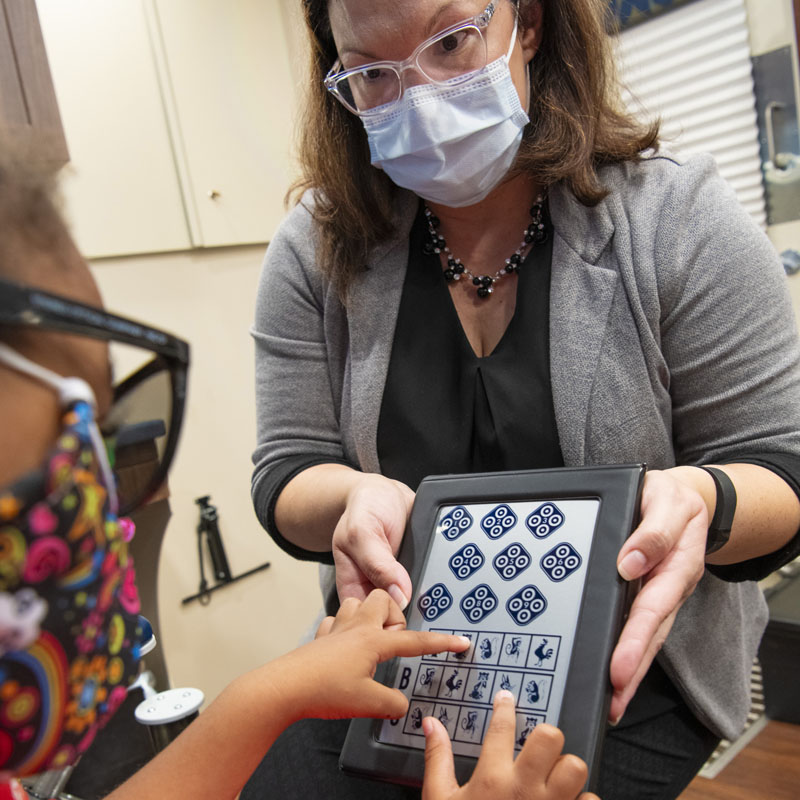Vision therapy is like physical therapy for your eyes. But research only supports using it for a convergence insufficiency. While you might be tempted to try it for other eye issues, research doesn’t support using it for other conditions. That means it might not help, and it could even make things worse if used for the wrong conditions.
Advertisement
Cleveland Clinic is a non-profit academic medical center. Advertising on our site helps support our mission. We do not endorse non-Cleveland Clinic products or services. Policy

Vision therapy is a term some optometrists and occupational therapists use to refer to treatments that improve your vision through training. This treatment generally includes monitored in-office and at-home eye exercises that you do over the course of weeks to months.
Advertisement
Cleveland Clinic is a non-profit academic medical center. Advertising on our site helps support our mission. We do not endorse non-Cleveland Clinic products or services. Policy
In addition to eye exercises, your vision therapy treatment might also involve other tools. Some examples include training glasses, light-bending prisms, eye patches, electronic devices and much more.
The pediatric eye community doesn’t universally agree on what constitutes vision therapy. But some treatments that might fall under this umbrella include:
Advertisement
Vision therapy starts with an in-office evaluation and tests. Those tests help an eye specialist determine if you or your child has an issue with how your eyes align and work together. Based on the test results, your eye specialist may recommend vision therapy. If they do, they may also recommend certain treatments. Your treatment plan can take place over the span of weeks or months.
Orthoptic eye exercises (also known as orthoptics) can treat convergence insufficiency and a related condition called accommodative dysfunction. Those conditions are forms of binocular vision dysfunction. Convergence insufficiency is when your eyes struggle to point inward so you can see objects that are closer to you. Accommodative dysfunction is when your eyes struggle to focus, which can sometimes go hand-in-hand with convergence problems.
Eye specialists, like pediatric ophthalmologists, optometrists or orthoptists, prescribe and oversee these sessions. Your eye specialist will teach you which eye exercises to do, how to do them and tell you how often you need to do them. You can then do the exercises at home. Vision therapy for convergence insufficiency and accommodative dysfunction can reduce symptoms of blur, eye strain or diplopia and improve the way your eyes work together.
Most vision therapy is controversial among eye care specialists. Research doesn’t support its use for conditions other than convergence insufficiency and accommodative dysfunction. And in some cases, trying certain forms of vision therapy can delay other treatments that will work, which can lead to permanent vision issues.
Multiple expert organizations recommend against the use of behavioral visual therapy for conditions other than convergence insufficiency. The organizations that recommend against using it for other conditions are:
There are several factors that could contribute to learning difficulties for children. And in many cases, it’s more than one factor. Some of the most common include:
Advertisement
It can be difficult, frustrating or even scary to have trouble seeing the world or watch your child have this issue. While vision therapy might seem like a good option, it’s important to know that it only treats convergence insufficiency and accommodative dysfunction. There isn’t any strong scientific evidence to show that vision therapy can treat any other eye conditions. That’s the main reason why vision and medical insurance plans don’t usually cover it, leaving you to pay for it out of your own pocket.
If you have questions about potential vision issues and how they affect your child, talk to their pediatrician. They can recommend specialists who can properly diagnose what’s happening and offer effective, science-based treatment options.
Advertisement
Getting an annual eye exam at Cleveland Clinic can help you catch vision problems early and keep your eyes healthy for years to come.

Last reviewed on 02/19/2025.
Learn more about the Health Library and our editorial process.